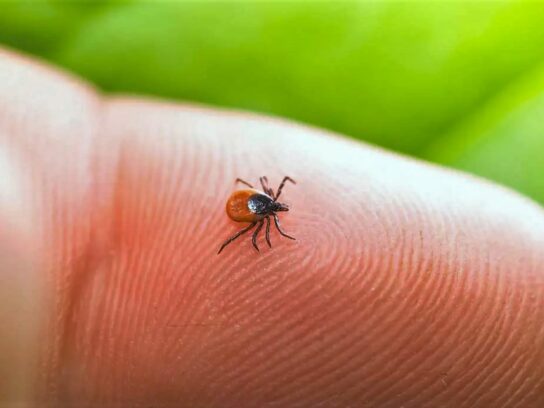
Deer tick season is upon us, and Lyme disease and other tick-borne ailments are a serious health threat, with about one-tenth of Americans having been infected. Today I will give you six ways to avoid and treat these illnesses.
First, recognize the problem. The Companion Animal Parasite Council forecasts that 2022 as late as November in Maryland and the mid-Atlantic will have a higher-than-average risk of Lyme and other tick-related diseases, due to climate crisis hot weather, and longer reproductive and active seasons for disease vectors. Lyme disease is serious and often difficult to diagnose, with symptoms including fever, rash, facial paralysis, arthritis, chills, headaches, fatigue, muscle and joint aches, and swollen lymph nodes. Rocky Mountain spotted fever, a rare but dangerous disease carried by certain ticks, can be fatal if not treated.
Second, cover up. As recommended by the Mayo Clinic of Rochester, Minnesota, when hiking through woods or grassy areas, wear shoes, long pants tucked into your socks, a long-sleeved shirt, hat and gloves. Stick to trails and avoid low bushes and long grass.
Third, use insect repellant on your skin, with DEET, preferably a twenty percent concentration or higher. And buy pants and shirts with “Insect Shield” or similar permethrin treatments. These are available from L.L. Bean (which did well in a Consumer Reports lab test), REI, Insect Shield on Amazon, or Craghoppers (the preferred choice of the British SAS special forces regiment). Such clothes are usually good for seventy washings and many years of wear. Or buy a bottle of permethrin yourself and spray your clothes – good for six washings or six weeks. If you can’t find permethrin, spray DEET on your cotton clothing (not on man-made fabrics), and on your skin.
Fourth, as soon as you get home from your hike, examine yourself carefully and pick off any ticks, remembering that some nasty ones can be a small as the tip of a pencil lead. Focus on your groin, armpits, waist, belly button, neck and head. Pull any attached ticks gently straight up with fine tweezers, then wash the site with soap and water. Put the tick in a sealed plastic bag to check its type in case you have symptoms later. Take a hot shower and wash and dry your clothes in hot water and the hottest air setting. And check your pet – dogs and cats are tick magnets! The CDC says that it takes 36 to 48 hours for the Lyme disease bacterium to be transmitted, so if you check and wash yourself and your pet right away you should be fine.
Fifth, if you find a tick bite, don’t panic. The chances that you will be infected from one bite are low, less than two percent. But repeated exposures increase your chances substantially – I had a friend in Connecticut (one of the worst Lyme disease states) that got Lyme three times, just from regularly working in his garden. Get a test two to six weeks after the bite. Keep an eye out for the “bull’s eye” red or salmon-colored circle (called an erythema migrans or EM) around the bite, sometimes up to eight inches wide, that appears in about 80 percent of cases, usually one to four weeks after the bite.
Sixth, see your doctor if you have symptoms or concerns. S/he may prescribe blood tests and a course of antibiotics if you have a high chance of having Lyme or other diseases.
Happy hiking!
*****
By the way, the title of this article is a riff on one of the most famous headlines of all time, Variety’s “Sticks Nix Hick Pix” of July 17, 1935. Unpacked, this meant that rural areas were rejecting movies about rural life. But Variety had only four rhyming words, while mine has five. So, “Six Nix-Fix Ticks Sicks” licks/kicks “Sticks Nix Hick Pix”!
Photos courtesy Lew Toulmin
- CDC Map of Lyme disease cases in 2019, the latest data available, showing Maryland in the highest concentration area. The illness is named after Lyme, Connecticut, where the disease was first identified and analyzed in 1975. According to NewScientist.com, one in seven people worldwide have had Lyme disease, and it is the world’s most common tick-borne illness! The worst area in the world is central Europe, with an almost 21% infection rate, east Asia, almost 16 percent, and western Europe, 13.5%. North America has an infection rate for Lyme of just over 9 percent.
- Not all ticks carry Lyme and other diseases. These are the three worst offenders, showing their size and markings, courtesy of the Illinois Department of Public Health.
- A small tick, probably an adult female black-legged tick, which can carry Lyme and other diseases. But this tick is not feeding via biting, and is not engorged with blood, so it has not fed recently. Hence it should just be brushed off quickly, and then don’t worry!
- A bottle of Permethrin, $16.95 on Amazon, deters ticks, mosquitos, chiggers and other pests, prevents a range of diseases, and is usable on clothes, tents, sleeping bags, boots, shoes, and netting, including all fabric types. This is one of several brands available.
- Various types of Lyme-related rashes. The classic “bull’s eye” symptom is shown in the lower center and left center. From LymeDiseaseUK.com – yes, the Brits have Lyme, too.
- Other tick-related diseases also cause skin rashes, as shown here, from VeryWell.com.
- A biting tick hides in the hair of a dog.

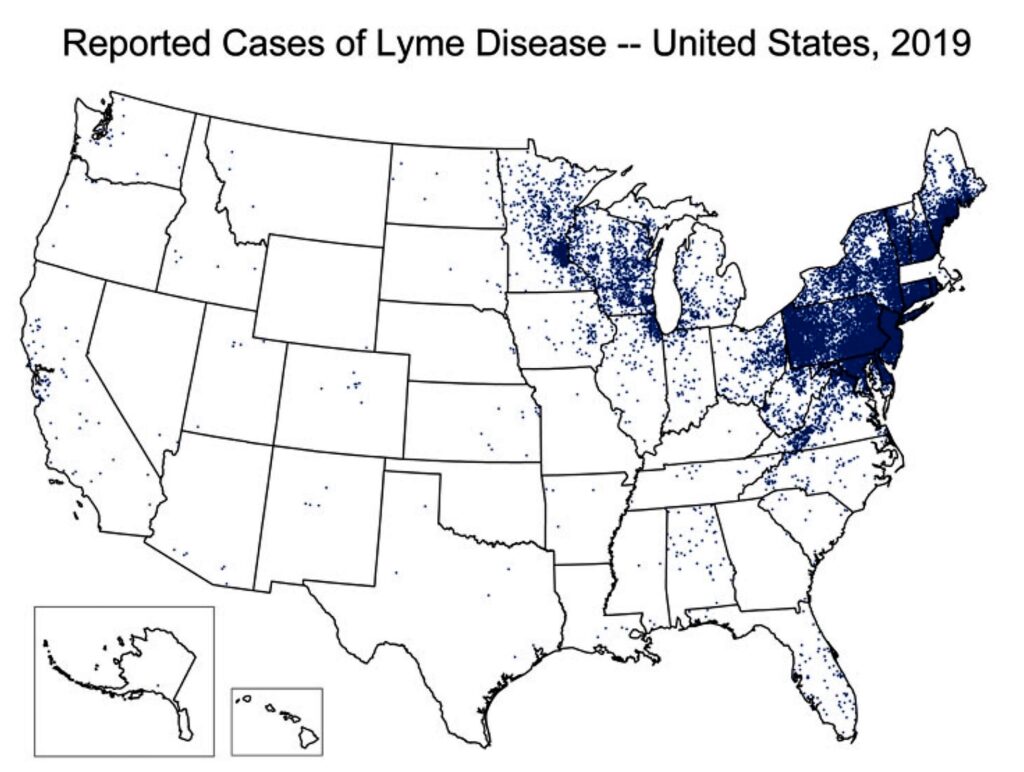
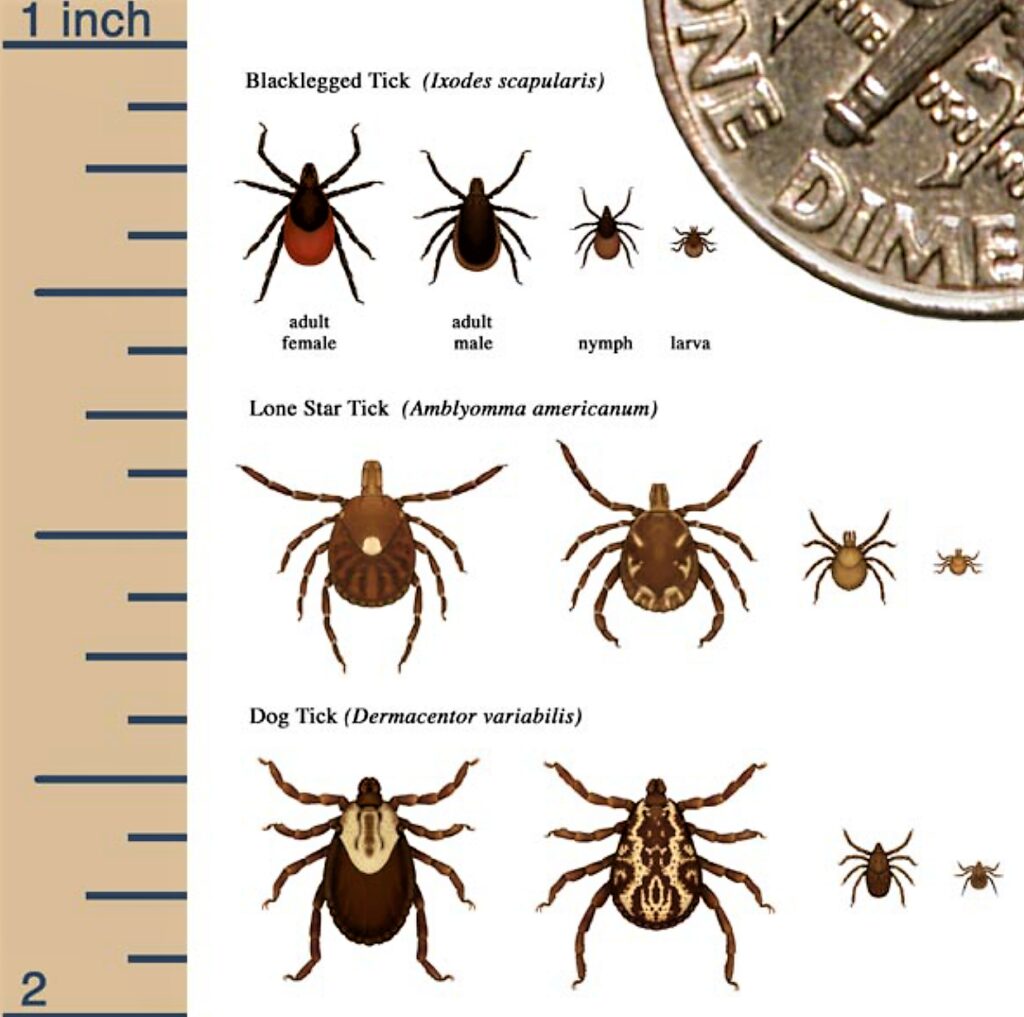
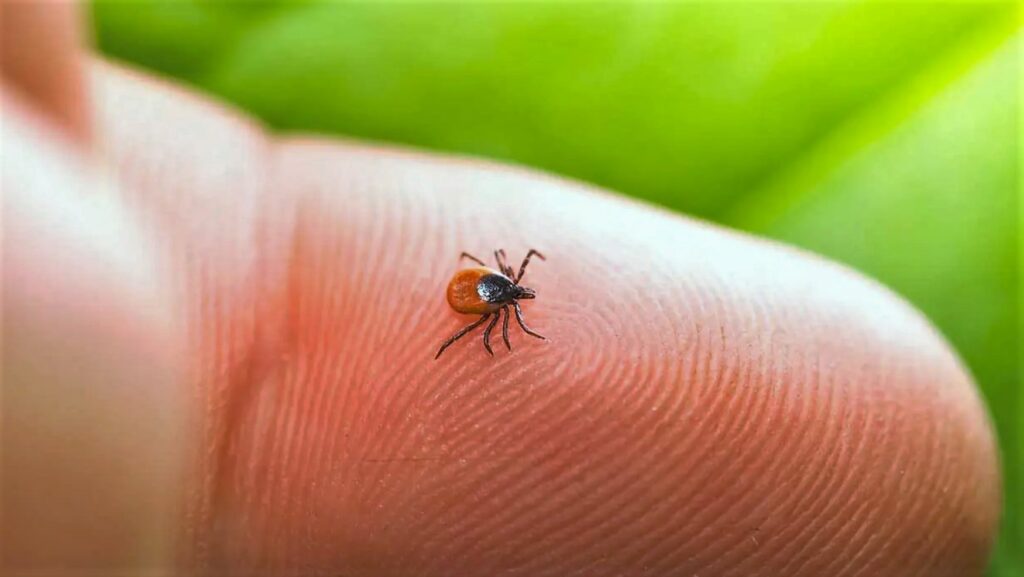
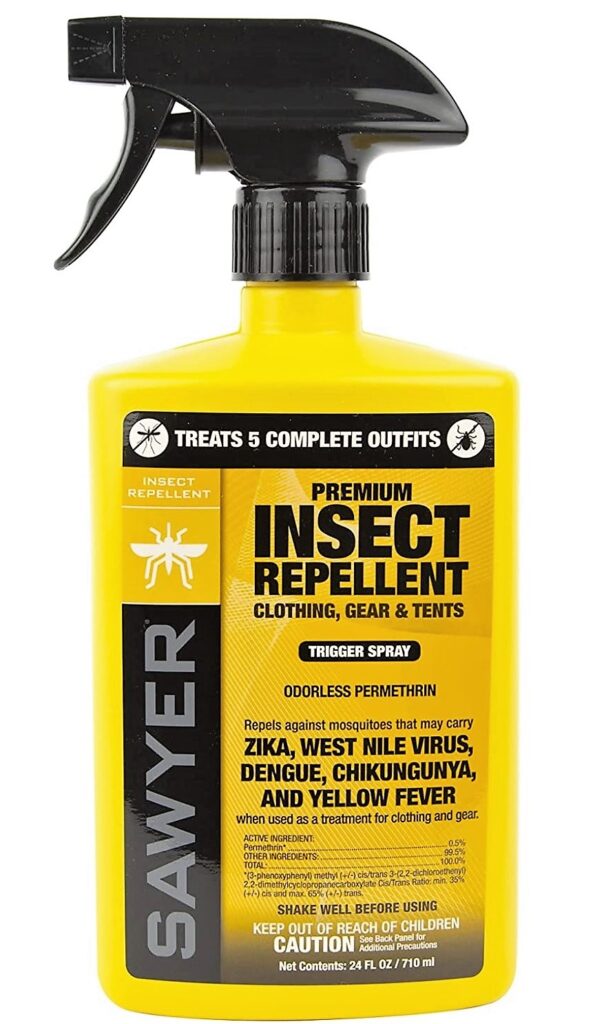
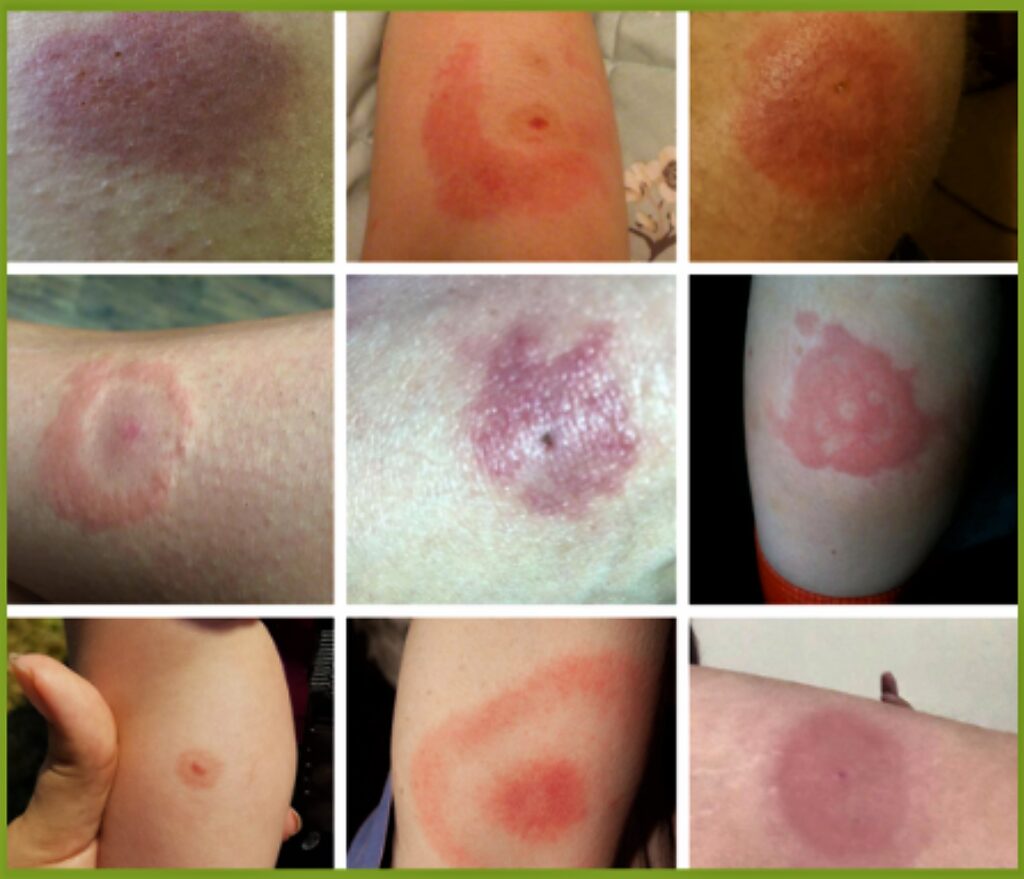
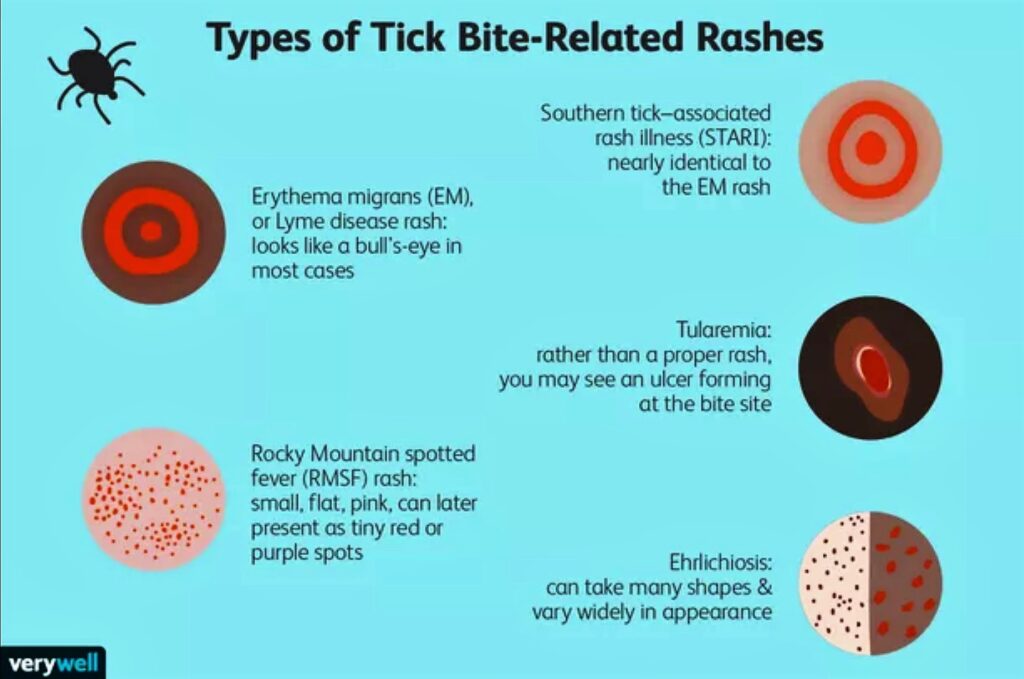
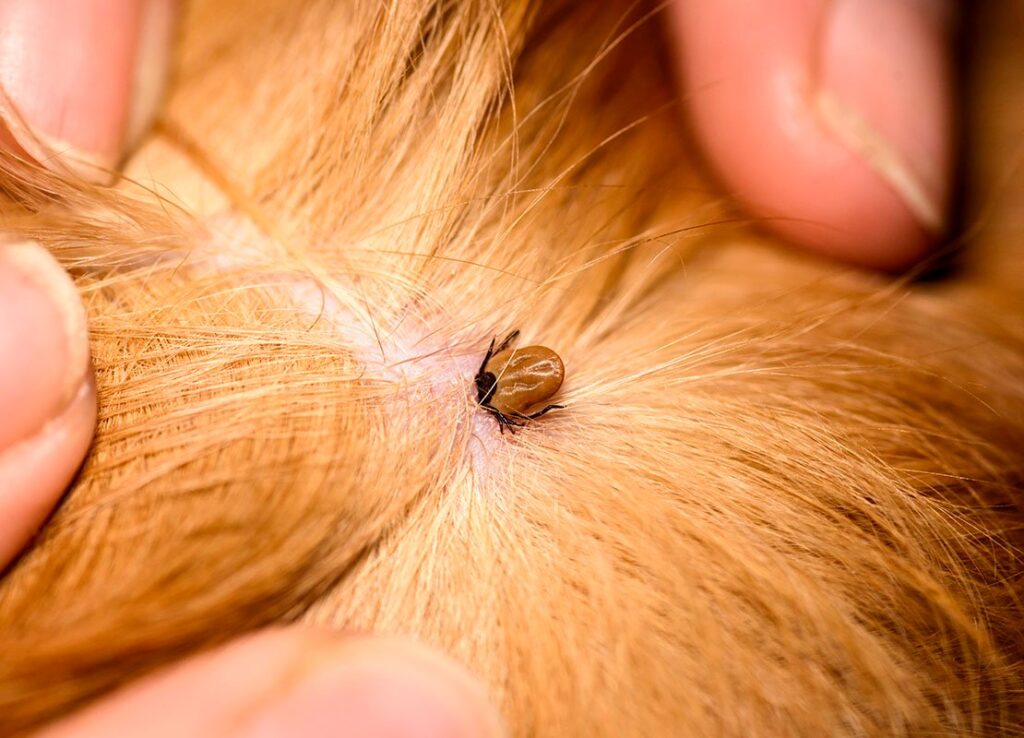



Comments are closed.